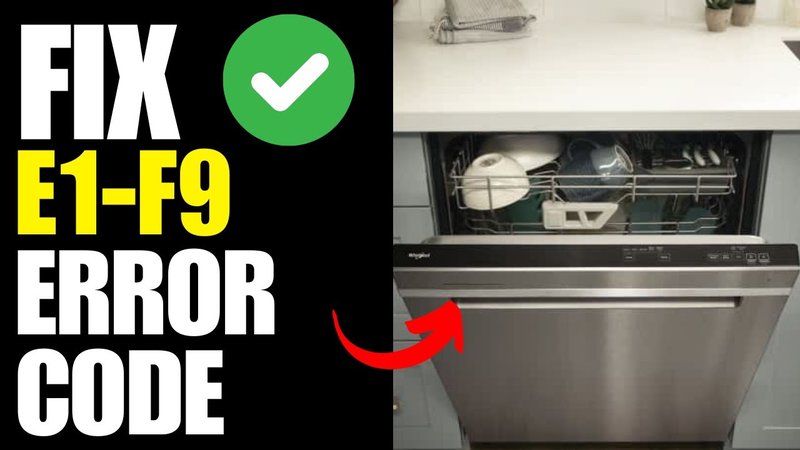
Firstly, let’s talk about dishwashers. Just like a car has a dashboard to alert you when something needs attention, dishwashers have error codes. These codes are how your dishwasher communicates problems. “E1” is one such code, and while it might sound scary, it’s simply your dishwasher’s way of telling you there’s a problem with water heating. Imagine trying to wash dishes in cold water—it just doesn’t work as effectively. That’s the issue your machine is flagging for you.
Understanding Error Code E1
So, what exactly does Error Code E1 mean? Essentially, this code indicates a problem with the water heater circuit in your dishwasher. In simpler terms, it’s as if your dishwasher is trying to take a warm shower but the water heater isn’t cooperating. As a result, the water in the machine doesn’t heat up to the required temperature.
This might sound technical, but think of a water heater like that cozy blanket that keeps you warm—without it, you’re left shivering. In dishwashers, hot water is crucial for breaking down food particles and ensuring your dishes come out sparkling clean. When the error code appears, it’s saying that this vital “blanket” isn’t functioning right.
Here’s the deal: this isn’t just a minor inconvenience. If the water doesn’t heat properly, your dishwasher can’t clean effectively, leaving you with less-than-clean dishes. In addition, using a machine with this error might not be safe, as consistent functionality issues can lead to further damage. Knowing this helps you understand why you should address it sooner rather than later.
Potential Causes of Error Code E1
You might be wondering why your otherwise reliable Whirlpool dishwasher has suddenly decided to throw a tantrum. There are a few common reasons why Error Code E1 can appear. One of the main culprits is a malfunctioning heating element. Think of the heating element as the stove burner that heats your pot of water. If it isn’t working, the water won’t get hot.
Another potential cause is a faulty temperature sensor. The sensor’s job is to keep track of how hot the water is getting. If it’s not working properly, it might not tell the heater to turn on at the right times—kind of like a confused traffic light. Lastly, wiring issues within the machine could be responsible. If the wires that deliver power to the heater are damaged or disconnected, the heater can’t work, leading to the same cold-water problem.
With these potential causes in mind, it’s important to remember that trying to fix these issues yourself can sometimes lead to more problems, especially if you’re not familiar with appliance repairs. Always consider contacting a professional technician to diagnose and repair the issue safely.
What Should You Do Next?
Now that you have a clearer understanding of Error Code E1, what’s the next step? First things first, you need to decide if you’re comfortable investigating further on your own or if a professional should step in. If you feel adventurous and very careful, you could start by checking the power supply to the dishwasher, as sometimes a simple reset can solve the issue.
If that doesn’t work, turning off your dishwasher’s power at the circuit breaker and examining the user manual might provide guidance on any basic troubleshooting steps you can safely perform. However, if you’re like most of us who prefer not to tinker with electrical appliances, calling in an expert is undoubtedly the best decision.
Finally, to avoid this error—or others—in the future, regular maintenance is your best friend. Think of it like a routine check-up for your health. Running cleaning cycles with vinegar or a dishwasher cleaner helps keep the interior components in good health. Regularly checking and clearing the dishwasher’s filter can also prevent many problems. Prevention is often easier and cheaper than repairs, after all!
So, there you have it. While Error Code E1 might seem daunting at first, understanding the issue and knowing what steps to take can make the situation manageable. Whether you choose to roll up your sleeves or call in a professional, taking action is key to keeping your dishwasher running smoothly.